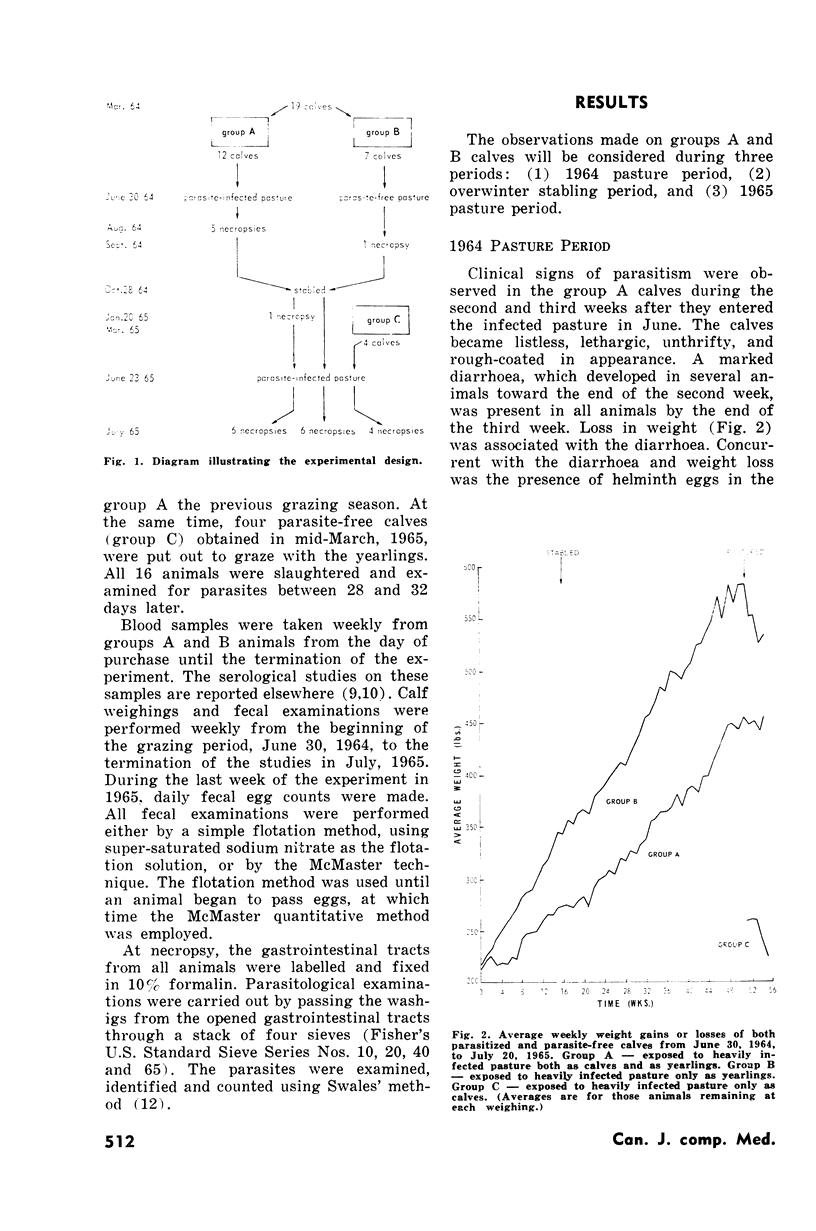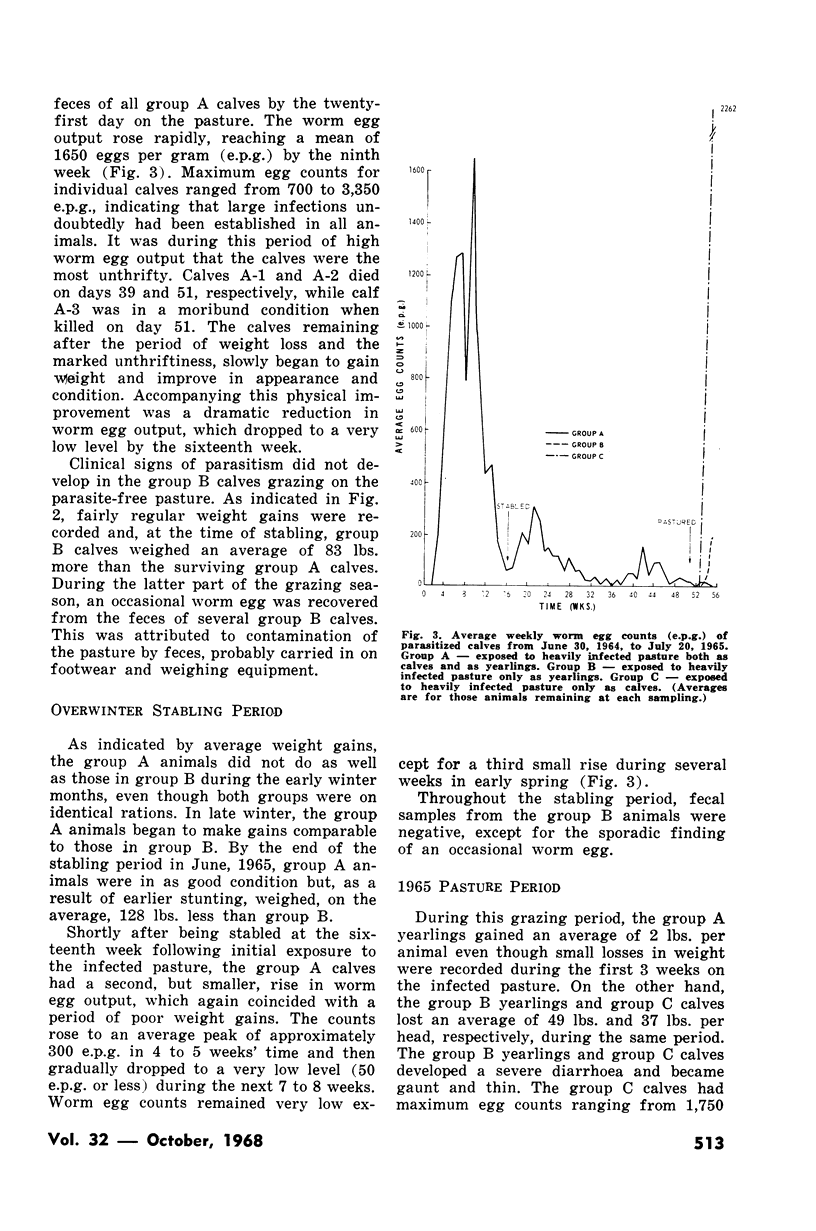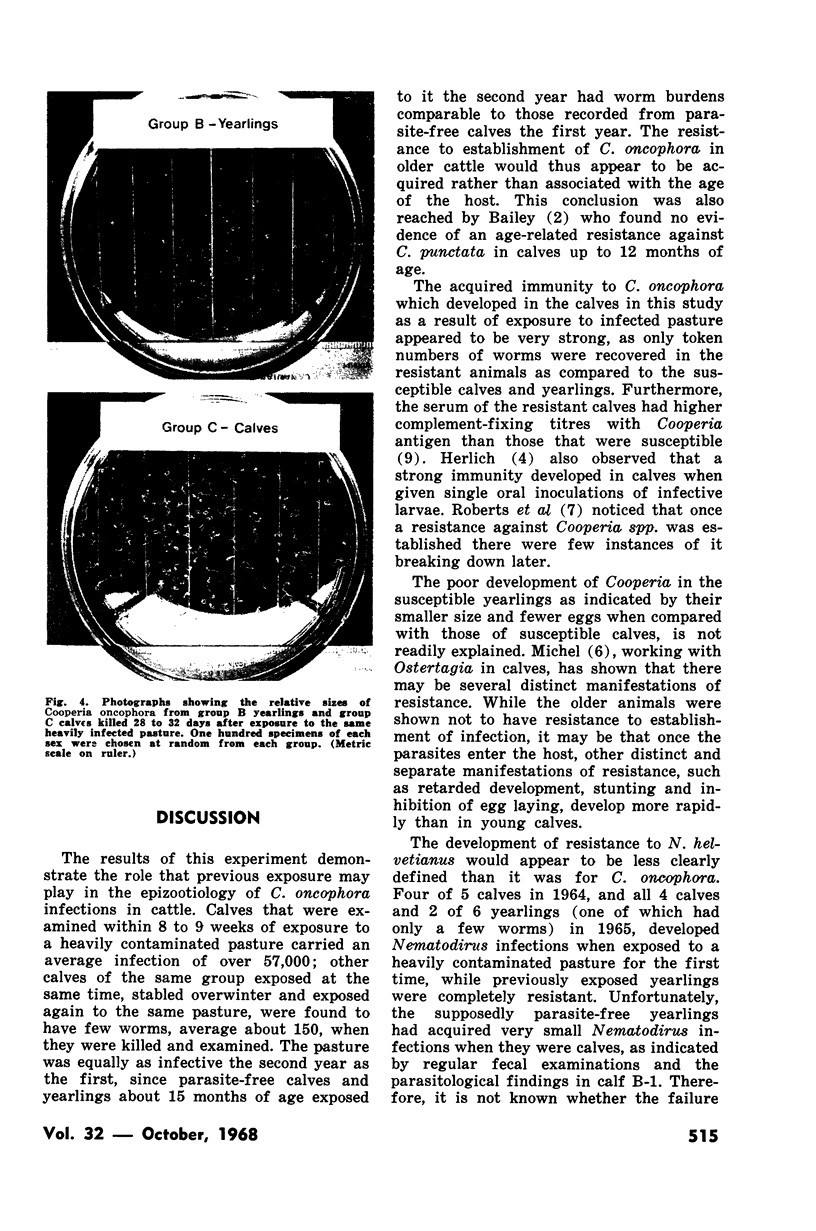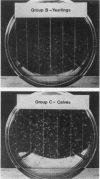Abstract
An age resistance in cattle to establishment of infection with Cooperia oncophora was not demonstrated. Cattle exposed to a heavy infection for the first time at approximately 15 months of age were as susceptible to establishment of infection as 3 to 4 month old calves, but stunting of worms and inhibition of ovulation did occur in the older animals, possibly due to a rapid development of resistance as a result of sensitization by a previous extremely light infection.
An age resistance in cattle to infection with Nematordirus helvetianus was not clearly demonstrated. At necropsy, 8 of 9 calves and 2 of 6 yearlings exposed to pasture infections for the first time did harbour Nematodirus worm burdens, while yearlings which were heavily infected previously were completely free of this species.
Under the conditions of this investigation, age and acquired resistance to Ostertagia ostertagi were not demonstrated, since previously non-exposed calves and yearlings and previously infected yearlings had comparable worm burdens.
This study demonstrated the adverse effect that heavy parasitism has on the development of susceptible animals. Animals which had little or no exposure to parasitism were found to be much more susceptible to the effects of parasites than were resistant animals.
Full text
PDF






Images in this article
Selected References
These references are in PubMed. This may not be the complete list of references from this article.
- Anderson N., Armour J., Jarrett W. F., Jennings F. W., Ritchie J. S., Urquhart G. M. A field study of parasitic gastritis in cattle. Vet Rec. 1965 Oct 9;77(41):1196–1204. [PubMed] [Google Scholar]
- Fraser C. M., Campbell D. J. Variability of resistance of calves to acquisition of infection by Nematodirus Helvetianus. Can Vet J. 1966 Sep;7(9):193–198. [PMC free article] [PubMed] [Google Scholar]
- Herlich H. Immunity and cross immunity to Cooperia oncophora and Cooperia pectinata in calves and lambs. Am J Vet Res. 1965 Sep;26(114):1037–1041. [PubMed] [Google Scholar]
- MAYHEW R. L., MILLER G. C., TORBERT B. J. Studies on bovine gastro-intestinal parasites. XXI. Immunity to Cooperia punctata and Oesophagostomum radiatum. J Parasitol. 1960 Dec;46:859–866. [PubMed] [Google Scholar]
- Rice C. E., Smith H. J., Cochrane D. Serological studies of parasitized cattle. II. Electrophoretic properties of serial serum samples. Can J Comp Med Vet Sci. 1967 Feb;31(2):37–42. [PMC free article] [PubMed] [Google Scholar]
- Rice C. E., Smith H. J. Serological studies of parasitized cattle. I. Complement--fixing activity of serial serum samples. Can J Comp Med Vet Sci. 1966 Sep;30(9):245–250. [PMC free article] [PubMed] [Google Scholar]
- Smith H. J., Archibald R. M. Experimental helminthiasis in parasite-free calves on marshland pastures. Can Vet J. 1968 Feb;9(2):46–55. [PMC free article] [PubMed] [Google Scholar]



